Extensive Farming
Our farming process is based on traditional methods of production. We do not use industrial techniques to increase the growth or weight of fish. Feeding is not automated but done by people. The brown trout are harvested in a traditional way, by pulling nets through a pond, which protects fish from suffocating or getting damaged. Our trout farm uses only traditional fishing tools, such as hand nets, seine nets and boat hooks. To recreate the typical features of landscape, wooden monks were built. We aim at restoring brown trout farming, promoting conscious and ethical breeding as well as educating society on local history and environment protection.

The Ojcowski Brown Trout
Breed Purity
To maintain breed purity, only spawners from the local river and streams are used. Stronger immunity against diseases, a high survival rate and fast adaptation to foraging for food in a natural way are the distinguishing features of the offspring produced by wild brown trout. Moreover, in case of an emergency, the mingling of fish does not pose a threat to the genetic purity of the local population of wild brown trout.
Appearance
The brown trout is a kind of fish characteristic of Poland. Its body is streamlined and torpedo-shaped. Covered with black spots, it is usually darker on the back, ranging from green to brown, and lighter on sides, which are covered with red spots surrounded by halos. Such shades protect it from natural enemies and make it easier to camouflage in water.
 |
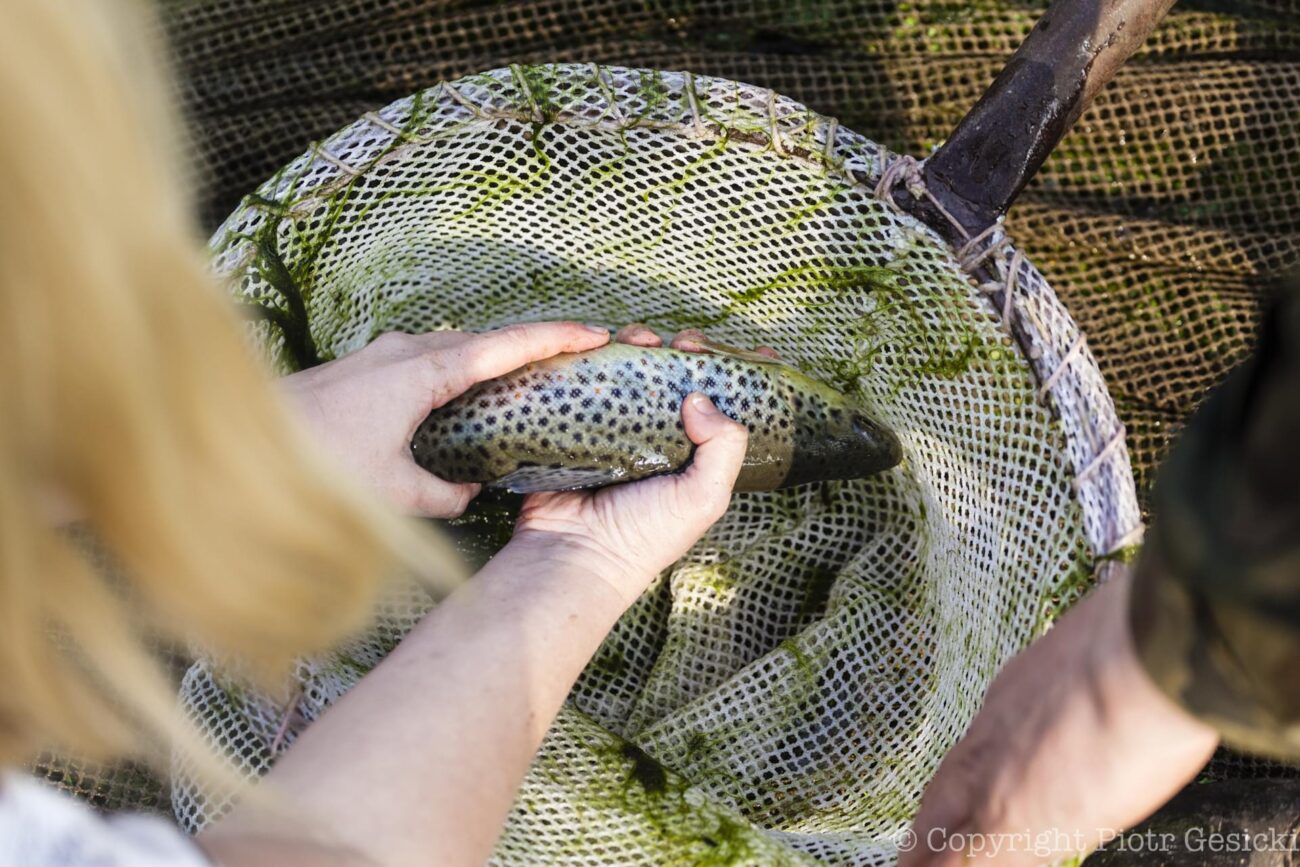 |
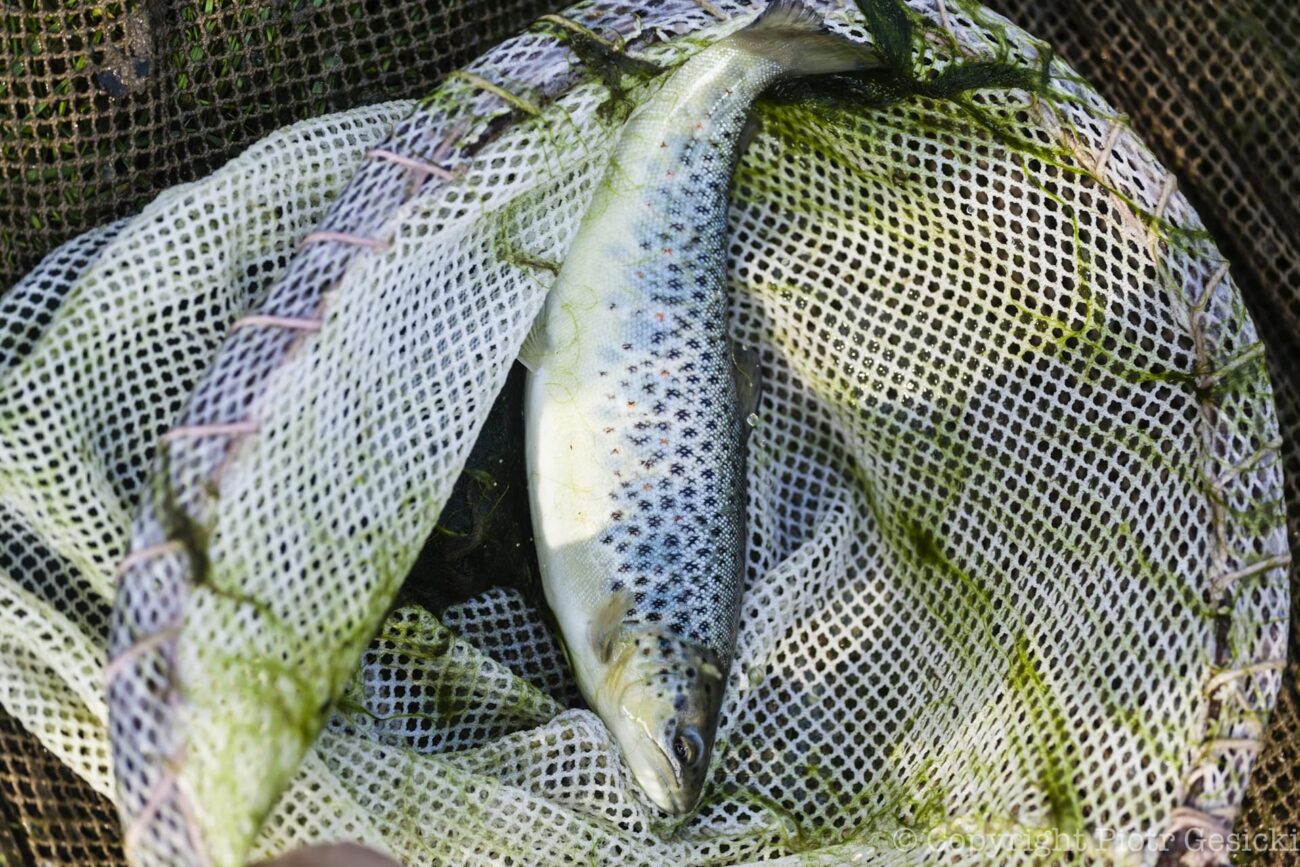 |
Personality
Brown trout are predators. They do not like sunlight, so they tend to forage early in the morning and on cloudy days. Brown trout are very timid and have excellent eyesight so that they can discern a human being from a distance of several metres. This is why a school of brown trout usually gather in the middle of a pond or near the monk at the water outlet. They also hide in natural depressions and gullies, where they feel safe.
Nourishment and Growth
Brown trout hunt insects living on the water surface. They feed on small crustaceans, leeches, tadpoles and small fish. They also show cannibalistic tendencies. Brown trout weigh about 0.3 kg. Kept in farm ponds, they mature at 2.5-3 years.
Spawning
Brown trout reproduce in autumn, at the end of September, when the temperature of water drops to 8-90C. In this period, a female is accompanied by a few males. In the natural environment, a female brown trout carves with its tail a den at the bottom of the river, in which it lays between 200 and 4000 big yellow-orange eggs. Their number depends on the age of a female fish. After conceiving, it covers the spawn with sand and gravel. The fry hatch in a few months.
In farming conditions, spawning takes place in the hatchery after having caught spawners, that is fish which are physiologically ready to reproduce. Next, the newly-hatched fry are kept in special pools and released into the pond when grown up.
The Pond Quota
Depending on the age of brown trout, there are from hundreds up to thousands of them in one pond. At our farm, the brown trout are segregated by hand and placed in a pond according to their size and weight. Thanks to a small amount of fish per pond, the brown trout enjoy natural food and are only partially fed with granular feed. They are provided with enough space to develop healthily and build muscles.
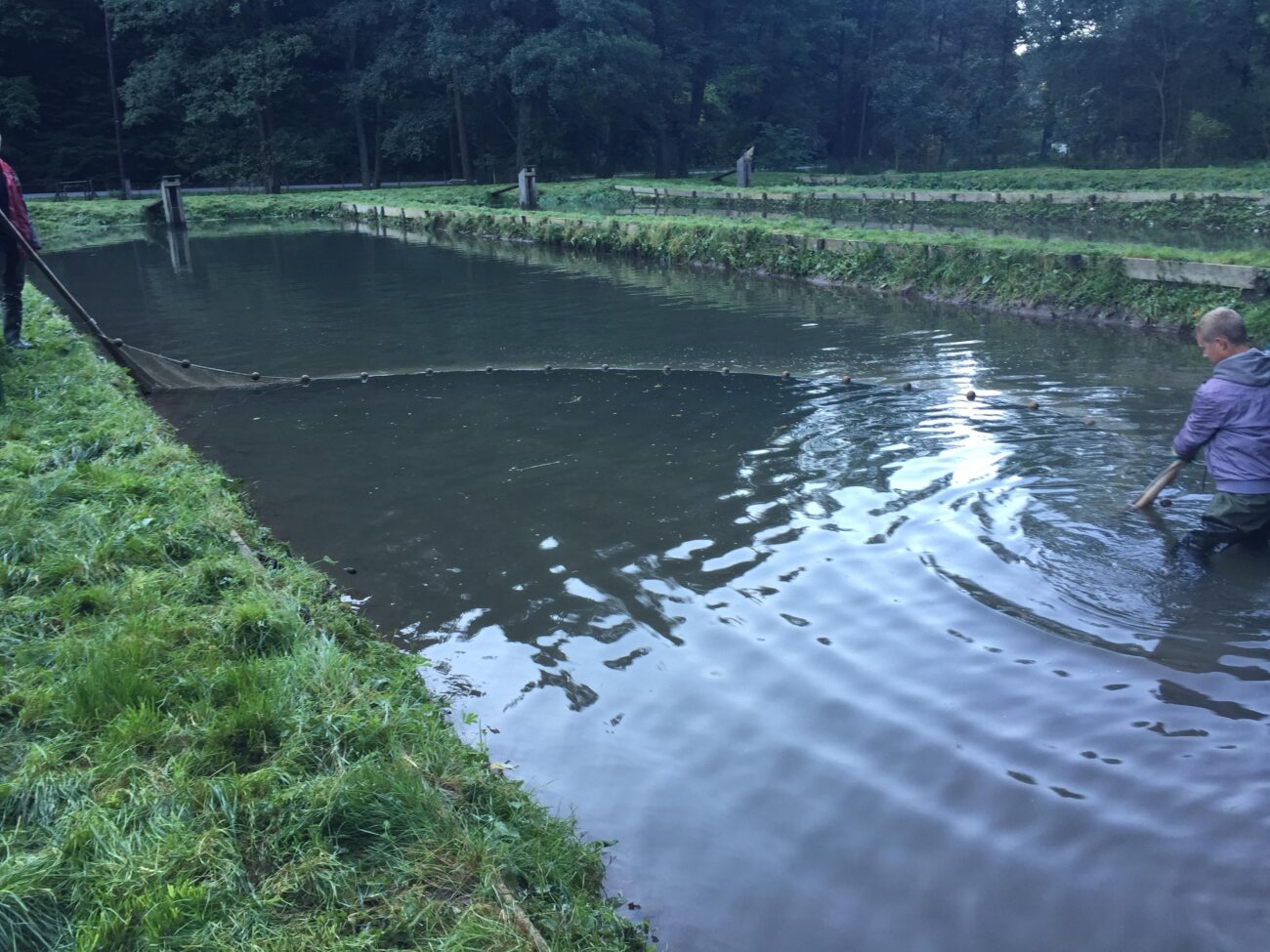 |
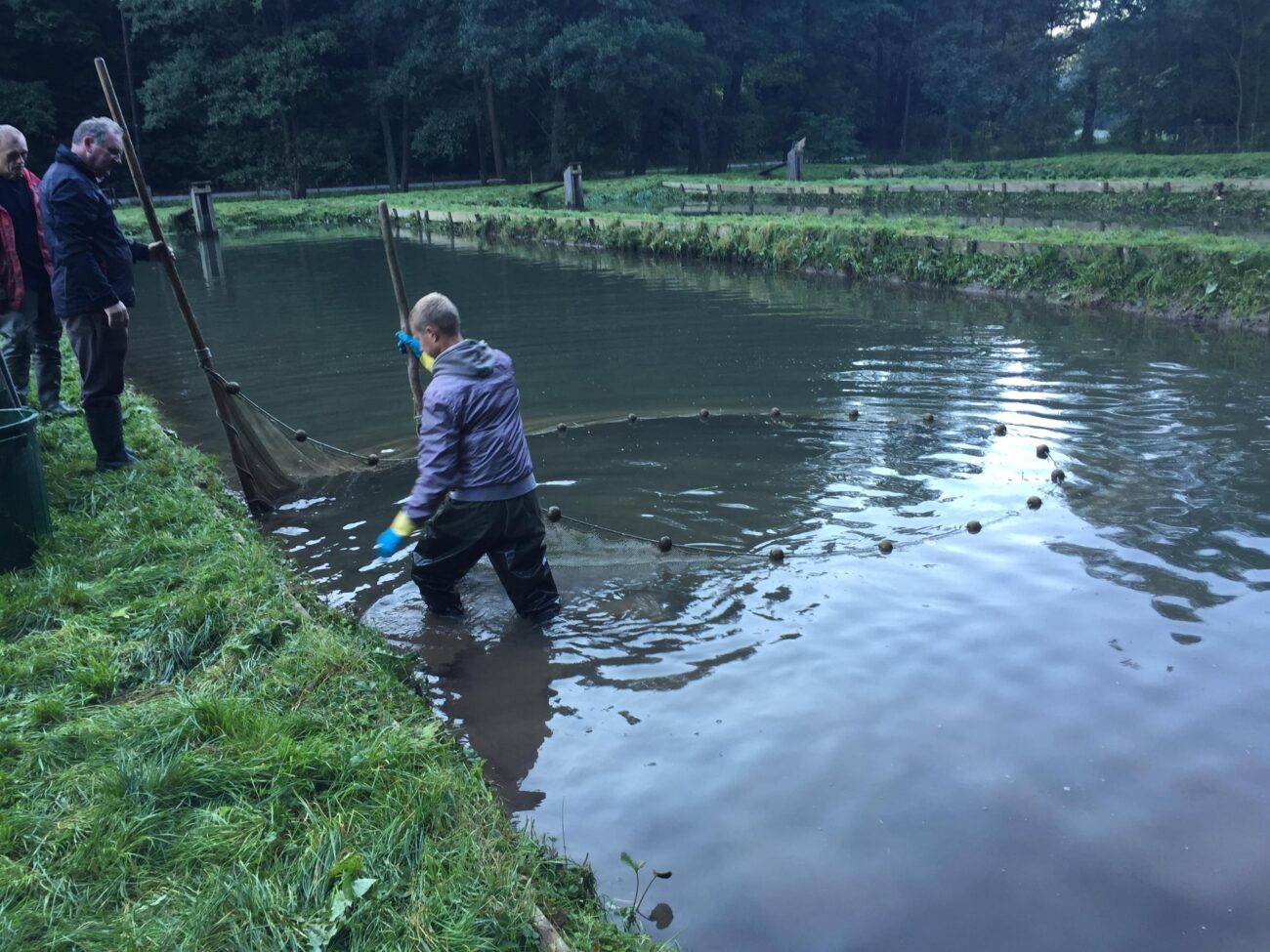 |
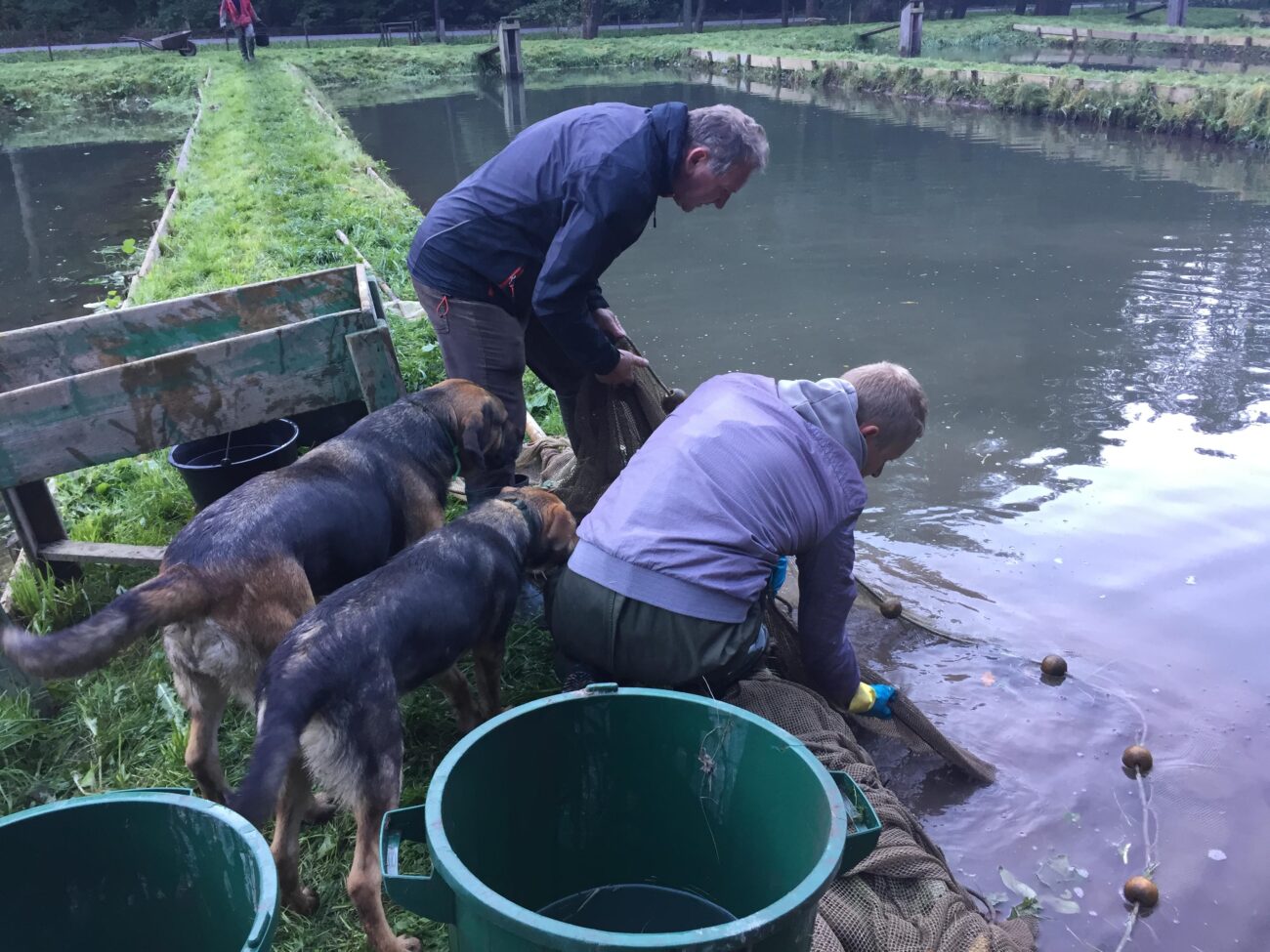 |
